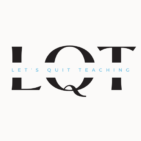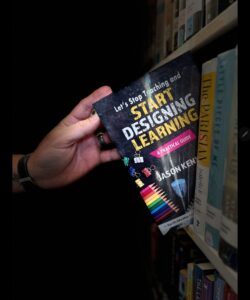As educators, we bring an undeniable fire into our classrooms every day. We strive to unlock the potential in every learner, pushing them to become their best selves. But what if we took that same passion—the relentless drive to help our kids succeed—and brought it to supporting our fellow educators? If we truly want to elevate learning for all of our kids at school, we must extend our energy, creativity, and commitment to the teacher down the hall as well. The same connections and relationships we cultivate with learners should exist among us as professionals. This is how we foster a culture of growth, not just for the kids in our classrooms, but for the adults who lead them.
Trust: The Foundation for Growth
Relationships are everything in education. It’s no secret that the most effective learning environments are built on trust, connection, and mutual respect. The same goes for our professional relationships with other educators. If we’re going to help each other become the best version of ourselves, we need to trust that our colleagues have our best interests at heart. This trust doesn’t happen overnight, and it can’t be demanded or forced. It must be nurtured through genuine connections. Take the time to know your fellow educators—not just as professionals but as people. What motivates them? What challenges are they facing? What do they need most from you?
Collective teacher efficacy, with an effect size of 1.57, tells us that when educators believe in the power of working together and trust that they can make a significant difference, the results for kids are astounding. When we lift each other up, we aren’t just supporting individual growth; we are creating conditions for learners to thrive. Building this foundation of trust allows us to engage in honest, meaningful conversations about our practice, leading to improvements that ripple out to every learner we touch.
Trust allows me to say, “Hey, I want to try this with my kids next week, what do you think?” or “Can you come by my classroom on Tuesday and observe my lesson? I’d really like to hear your take on the learning?” and even, “You know, I am hitting a roadblock with my kids, can you help?” This is the type of trust we need to have and must be able to use with each other as educators to get what we all want. It’s scary for sure, but the rewards are immeasurable.
Committing to Continuous Improvement
Supporting each other doesn’t stop at building trust—it requires an ongoing commitment to growth. This is where a shared vision becomes critical. Schools aren’t just a collection of individuals working in isolation or silos. We must be united in the belief that we are all learners, and that professional growth is a lifelong journey. This mindset fosters a sense of responsibility not just for our own improvement, but for everyone’s improvement in the building. We need to be willing to step into each other’s classrooms, share feedback, and engage in reflective dialogue about what’s working and what’s not.
PLCs aren’t about ticking boxes on a checklist—they’re about genuine collaboration, using data and shared experiences to help us become more effective teachers. I don’t even use the term PLC with any staff anymore. We call what we do together— the learning, the work of learning, the getting better together, Collaborative Teams. When educators consistently support one another in becoming better, our kids are the ultimate beneficiaries. The key here is commitment: are we a team committed to doing the work, even when it’s hard? Even when it challenges what we think we know about teaching and learning?
The key here is commitment, not buy in. Buy in is about us, and what’s best for us, and what’s comfortable for us. Commitment is about others. It’s saying, “No matter what we feel like on any given day, we come here and this is what we’ve promised to do for our kids, for our peers and for ourselves.” That’s commitment. It’s constant, never-faltering, and steady. It’s the promises we can rely on to support not only the kids in their learning, but also the adults who are leading them.
Facing Obstacles and Pushing Through
Of course, this kind of culture doesn’t come without challenges. We might encounter resistance from those who feel overwhelmed or unmotivated. Time constraints, administrative pressures, and differing teaching philosophies can create obstacles. Some might view collaboration as an extra burden rather than an opportunity for growth.
How do we combat these challenges? It starts with empathy and communication. We need to approach these situations with understanding, recognizing that every educator is at a different point in their journey. But we also need to be clear that growth is not optional—it’s essential. Growth is the cornerstone of our committed beliefs. Sometimes, it’s about reframing challenges as opportunities. A reluctance to change may stem from fear or insecurity, and building those trusting relationships can help ease these feelings.
Even more important, we have to acknowledge that no one is expected to have all the answers. The beauty of collaboration is that we’re figuring it out together. Schools that make collective teacher efficacy a priority see not only improvements in teaching but in the emotional well-being of educators. When we feel supported, we’re less likely to experience burnout and more likely to stick around for the long haul, bringing our best selves to the classroom each day.
Better Educators, Better Learning
When educators support one another in meaningful ways, the benefits are undeniable. Not only do we see professional growth, but we create a healthier, more positive environment in our schools. This kind of culture fosters resilience, reduces burnout, and ensures that we’re always striving toward something better. The ripple effect is clear: when educators become better at their craft, learners learn more deeply, more creatively, and more effectively.
Our kids benefit from a united team of educators who are committed to learning from one another, refining their craft, and ensuring that every classroom is a place of active, intentional learning. Ultimately, supporting our colleagues isn’t just about improving our schools—it’s about giving learners the best chance to succeed because they are led by teachers who are continuously improving for their sake.
The passion we have for teaching is a powerful force, and when we bring that same energy to supporting our colleagues, we amplify its effect. By building trust, committing to growth, and pushing through obstacles, we create a school culture where everyone thrives—teachers and learners alike. We must quit seeing professional development as an isolated, top-down process and start seeing it as a collaborative, dynamic journey that we’re all on together. When we do that, we ensure that every educator—and every learner—has the chance to be their very best.


